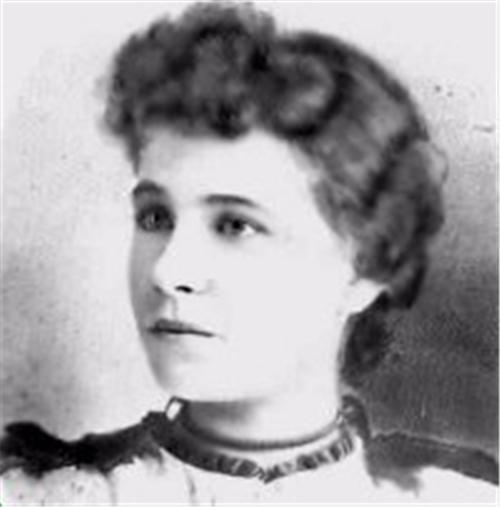
Katherine Lee Bates
Listening to the Mormon Tabernacle Choir sing “America the Beautiful” at Donald Trump’s inauguration, I couldn’t help thinking about Katharine Lee Bates, the song’s author, who would have been appalled by the sight of Trump taking the oath of office to her most famous creation.
Bates, you see, was a Christian socialist, an ally of labor unions, an advocate for immigrants, a feminist, an ardent foe of imperialism, and a lesbian. A well-respected poet and professor of English at Wellesley College, Bates (1859-1929) was part of progressive reform circles in the Boston area, concerned about labor rights, urban slums and women’s suffrage.
For decades Bates lived with and loved her Wellesley colleague Katharine Coman, founder of the college’s economics department, who authored The History of Contract Labor in the Hawaiian Islands and The Economic History of the Far West. Coman was also a poet. She and Bates jointly wrote English History as Taught by English Poets.
Although they lived together for 25 years in what was then called a “Boston Marriage,” they could not publicly acknowledge their intimate relationship. When Coman died, however, Bates published Yellow Clover: A Book of Remembrance that celebrated their love and their involvement in the radical and social reform movements of their day.
Were Bates and Coman alive today, they would probably have taken advantage of our current laws allowing same-sex couples to marry — a law that many Trump supporters hope that the Supreme Court will overturn.
Bates’ circle of reformers and radicals — including union activists, feminists, and housing crusaders — were strong advocates for immigrants. Bates and Coman volunteered at Denison House, a Boston settlement house that worked to improve the lives of immigrants who lived in Boston’s slums and worked in its sweatshops. Denison House was founded by their Wellesley colleague Vida Scudder, another radical socialist, feminist, and lesbian. It was modeled on Hull House, founded by Jane Addams in Chicago.
To honor her achievements, two elementary schools — one in Wellesley, Mass., the other in Colorado Springs, Colorado — and Bates Hall dormitory at Wellesley College are named for the author of “America the Beautiful.”
Bates does have one thing in common with Donald Trump. She was a Republican. But that was a time when there were many progressive Republicans, like Theodore Roosevelt. Even so, Bates broke with the party to endorse Democratic presidential candidate John W. Davis in 1924 because of the GOP’s opposition to American participation in the League of Nations. (Davis lost that election to Calvin Coolidge).
Like many activists at the time, Bates believed that the U.S. should participate in global affairs, but that it should not be a bully against weaker nations — sentiments she clearly expressed in “America the Beautiful.”
Bates penned the poem “America the Beautiful” in 1893 after visiting Pikes Peak in Colorado, from which she saw the Rocky Mountains in one direction and the Great Plains in the other.
When she returned to her hotel room, she wrote a letter to friends, observing that “countries such as England failed because, while they may have been ‘great,’” they had not been “good.” She declared, “Unless we are willing to crown our greatness with goodness, and our bounty with brotherhood, our beloved America may go the same way.” She revised the poem several times.
The most famous version appeared in her collection America the Beautiful, and Other Poems (1912). “America the Beautiful” is both a declaration of Bates’ patriotism and a protest against Gilded Age greed.
It begins with the now well-known words, “Oh, beautiful for spacious skies, for amber waves of grain; For purple mountains’ majesty above the fruited plain.” Then she pivots to the lines meant as a protest against America’s reckless and illegal overseas military adventures as well as the U.S. government’s illegal suppression of free speech, dissent, and civil liberties: “America! America! God mend thine every flaw, Confirm thy soul in self-control, Thy liberty in law! “
In another verse, reflecting her outrage at the rise of big business and corporate greed, she observed: “America! America! God shed his grace on thee. Till selfish gain no longer stain The banner of the free! “ Bates wasn’t happy about America’s political leaders, either, as reflected in this verse: “America! America! God shed his grace on thee. Till nobler men keep once again. Thy whiter jubilee!”
The poem’s final words — “and crown thy good with brotherhood, from sea to shining sea” — are an appeal for social justice rather than the pursuit of wealth.
“America the Beautiful” was published in 1895 and later set to music written by Samuel Ward, the organist at Grace Episcopal Church in Newark, New Jersey.
Donald Trump is as ignorant of American history as he is of the basics of the Constitution. But next time he’s in New England, he might want to visit Bates’ burtial site in the Oak Grove Cemetery in Falmouth, Massachusetts. He might be able to hear her, rolling around in her grave.
Peter Dreier teaches politics at Occidental College and is author of The 100 Greatest Americans of the 20th Century: A Social Justice Hall of Fame, published by Nation Books.
